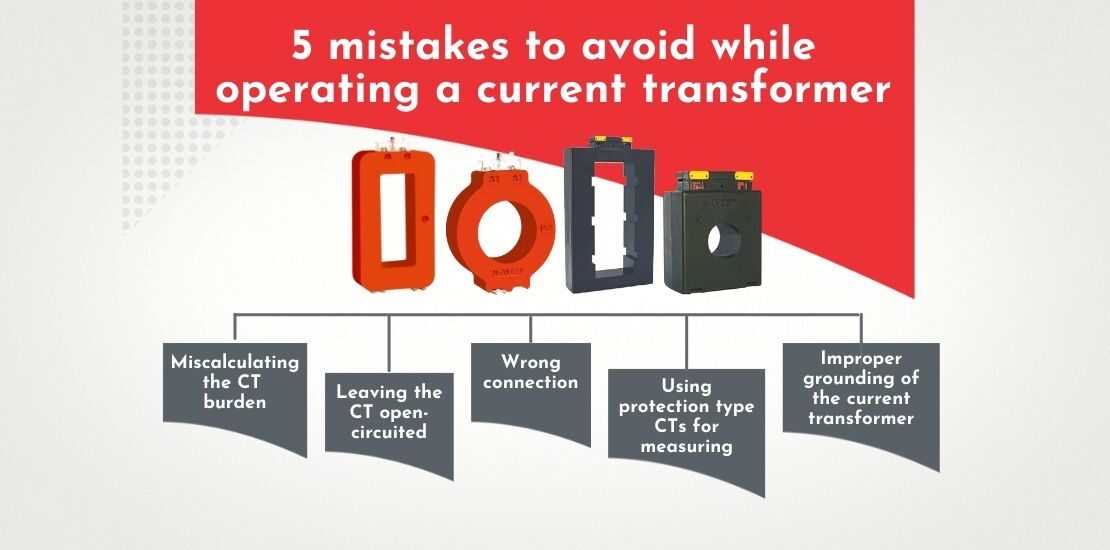- June 20, 2022
- Posted by: Dyaneshwar Nirmale
- Category: Digital Meters

Current transformers step down high-voltage current. They are vital for the efficient as well as safe utilization of power downstream of the grid. Current transformers must perform reliably over a long time span. Here, the quality and durability of the CT is critical. However, choosing the right current transformer, proper installation, and connections also make a vital difference to efficiency and afety in current transformer operations. Mistakes in these areas could jeopardise the safety of equipment and people.
Avoid these 5 mistakes when using a current transformer.
Miscalculating the CT burden
The burden in the current transformer is the load connected to the CT that obtains the voltage on the output. The load can be connective or inductive. The actual required values of burden are often inflated citing safety, or when the values are copied from some older drawings. However, using a higher burden than required extends the characteristics of the CT core, causing damage to the meter under overload conditions. Secondly, it also leads to inaccurate reading.
Learn how to calculate the CT burden and why it matters
Leaving the CT open-circuited
Keeping the CT circuit closed is essential for better safety. If the CT is left open-circuited, a very high back Emf voltage is generated according to Lenz’s law of electricity. This current could give a deadly shock to the person handling the open-circuited CT, and in more serious cases, could also cause an explosion and a serious fire incident. Explore our detailed blog to learn the consequences of open-circuiting a CT with relevant examples.
Explore the phenomenon in detail in our blog here
Wrong connection
Poor quality wiring and wrong connections can cause irreversible damage to the current transformer. Some of the common connection mistakes include leaving the CT open-circuited or miscalculating the grounding connection of the current transformer.
Using protection type CTs for measuring
The protection type current transformers are designed to operate under high levels of fault current. If they are connected to meters under normal operation, it will affect the measuring accuracy of the meters.
Additionally, the core of the protection type CT has a much higher saturation point than that of the metering type CT. If a fault occurs, the core of the current transformer will not saturate under high current. Thus, more than 10-20 times the rated current level will be passed on to the meters, causing severe damage to them.
Understand the difference between measuring and protection CTs
Improper grounding of the current transformer
When operating multiple current transformers, each of the CTs is often provided with a separate grounding. However, this practice could be dangerous. It is absolutely essential that the secondary of the current transformer should be grounded, and the grounding should be done at a single point. Grounding the CTs at multiple points does not exactly cause any issues under normal conditions. However, in case of a fault, the potential at the different grounding points of the current transformer will rise at different rates. This leads to a high current flow through the CT circuit, and this current is not representative of the primary current. This makes the relay believe that there is a fault in its protective zone, and trip.
Learn how single-point grounding can save your time, money and equipment
